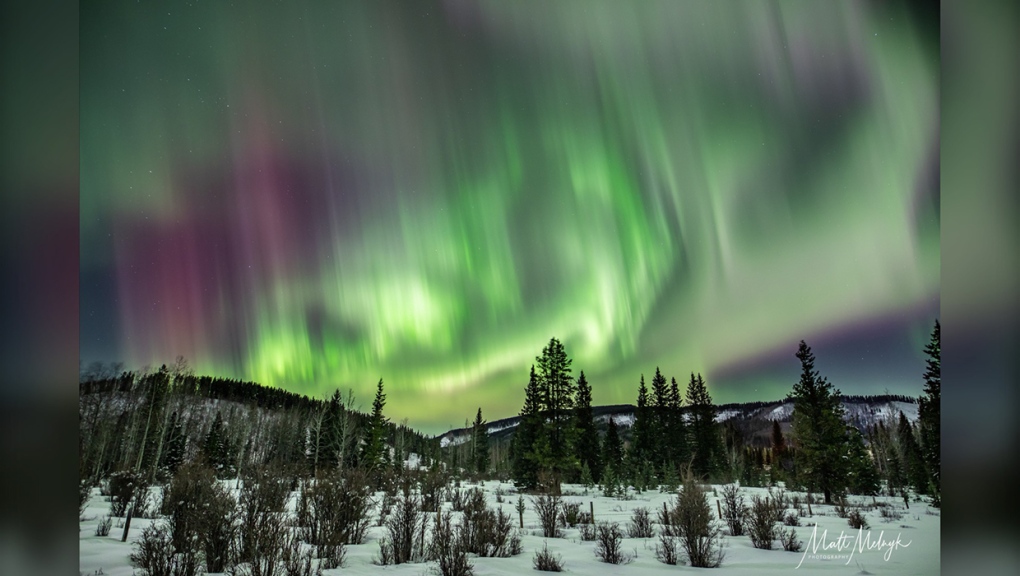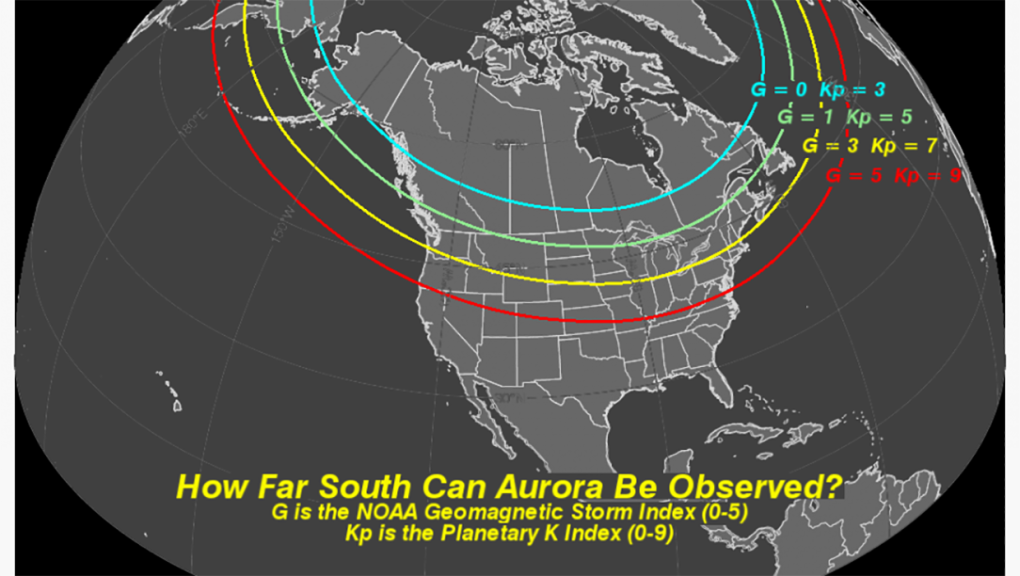'Massive' solar flare expected to light up Alberta sky Friday
 Northern lights over southern Alberta in early November. (Photo: Matt Melnyk)
Northern lights over southern Alberta in early November. (Photo: Matt Melnyk)
A “Cannibal CME” is approaching the earth, and while it sounds sinister, it actually is a good sign that a dazzling aurora light show could kick off December.
CME is short for Corona Mass Ejection and NASA describes them as “clouds of electrified, magnetic gas weighing billions of tons.”
These CME’s are ejected from the sun and launched into space at rapid speeds ranging from 20 to 2,000 kilometers per second.
“[Tuesday] there was a massive solar flare and it launched directly towards us at a faster speed and it’s going to swallow up the [solar flares] in front of it,” explained Matt Melnyk, an avid aurora chaser and pilot in Calgary. “So it’s eating the other ones in front of it and making itself stronger and powerful.”
 It’s difficult to determine exactly when this Cannibal CME will make contact with the Earth’s atmosphere, but it’s anticipated it could happen as early as Thursday evening, with the big show on Friday night.
It’s difficult to determine exactly when this Cannibal CME will make contact with the Earth’s atmosphere, but it’s anticipated it could happen as early as Thursday evening, with the big show on Friday night.
It’s difficult to determine exactly when this Cannibal CME will make contact with the Earth’s atmosphere, but it’s anticipated the aurora will be at its most intense Thursday evening heading into Friday morning.
The aurora should also be visible on Friday night into Saturday as well.
The National Oceanic and Atmospheric Administration uses a KP-Index (KPI) to monitor the level of disturbance (geomagnetic activity) these solar flares have on the Earth’s magnetic field.
The KPI ranges from zero (quiet) to nine (intense storm).
The higher the KPI typically results in a longer latitude of visibility in the northern hemisphere, though sometimes the relationship doesn’t always hold up.
The KPI for this upcoming CME is expected to be a seven (strong storm).
That means there is a high likeliness this aurora will be bright, energetic and colourful and could extend down into the United States.
SOLAR MAXIMUM
“Here in Calgary, you’ll be able to view the auroras directly overhead and south which is not normal our location at all,” said Melnyk. “Which means people in Colorado could see it, possibly even California.”
Right now the forecast over Calgary is showing mostly cloudy conditions for Thursday night, but there are encouraging signs of clearing conditions as we get into Friday and Saturday.
Even if Calgarians miss out on this latest aurora event, Melnyk says we are just getting started when it comes to these kinds of sightings in the sky as this cycle doesn’t hit its solar maximum until 2025.
“We are climbing our way towards solar maximum so these kinds of events are going to become more frequent, more often and we are going to have many, many opportunities to witness these aurora.”
If you capture any shots of this upcoming aurora feel free to send them our way at calgaryweatherpics@bellmedia.ca.
CTVNews.ca Top Stories

Joe Biden drops out of 2024 race, endorses Kamala Harris to be Democratic nominee
U.S. President Joe Biden dropped out of the 2024 race for the White House on Sunday, ending his bid for re-election after doubts were raised about his fitness for office. Soon after, he endorsed Vice-President Kamala Harris to take his place in the November election.
Justin Trudeau reacts to Joe Biden announcing he won't run for re-election
Prime Minister Justin Trudeau responded to the news that U.S. President Joe Biden won’t run for re-election Sunday, calling Biden a 'true friend.'
What happens next: Joe Biden wants to pass the baton to Kamala Harris. Here's how that might work
With U.S. President Joe Biden ending his re-election bid and endorsing Vice-President Kamala Harris, Democrats now must navigate a shift that is unprecedented this late in an election year.
The pilot who died in crash after releasing skydivers near Niagara Falls has been identified
NEW YORK (AP) — Officials on Sunday released the name of a pilot who died in a skydiving flight after her passengers jumped from the aircraft near the Niagara Falls.
Joy in Newfoundland after 'Lucky 7' fishers survive harrowing days lost at sea
There was a powerful word being repeated in the joyful Newfoundland community of New-Wes-Valley on Sunday: 'Miracle.'
Ottawa man waiting nearly a year for car to be fixed at Acura dealership
An Ottawa man says he’s been waiting nearly a year for his car to be repaired after it was damaged during a storm in August.
Canadian musicians struggle to get visas to perform in the U.S., some cancel shows
Backlogs and processing delays of temporary U.S. visas required by entertainers, athletes and artists has forced some Canadian bands to cancel U.S. tour dates because paperwork wasn't processed in time.
LCBO workers ratify tentative agreement, strike ends Monday
The union representing 10,000 workers at the Liquor Control Board of Ontario (LCBO) has ratified a tentative agreement, which will officially end its two-week strike at 12:01 a.m. Monday.
A history buff bought a piece of a tent from Goodwill for US$1,700. It really did belong to George Washington
As a collector of artifacts, Richard 'Dana' Moore makes a habit of scrolling through Goodwill’s online thrift store, and one day in 2022, the history buff came across an item that piqued his interest.





























